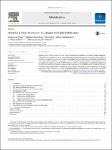Hepatitis E Virus Mutations: Functional and Clinical Relevance
Tong, Hoang van
Hoan, Nghiem Xuan
Wang, Bo
Wedemeyer, Heiner
Bock, Thomas
Velavan, Thirumalaisamy P.
Hepatitis E virus (HEV) infection is a major cause of acute hepatitis and affects more than 20 million individuals, with three million symptomatic cases and 56,000 recognized HEV-related deaths worldwide. HEV is endemic in developing countries and is gaining importance in developed countries, due to increased number of autochthone cases. Although HEV replication is controlled by the host immune system, viral factors (especially specific viral genotypes and mutants) can modulate HEV replication, infection and pathogenesis. Limited knowledge exists on the contribution of HEV genome variants towards pathogenesis, susceptibility and to therapeutic response. Nonsynonymous substitutions can modulate viral proteins structurally and thus dysregulate virus-host interactions. This review aims to compile knowledge and discuss recent advances on the casual role of HEV heterogeneity and its variants on viral morphogenesis, pathogenesis, clinical outcome and antiviral resistance.
Dateien zu dieser Publikation
Keine Lizenzangabe

